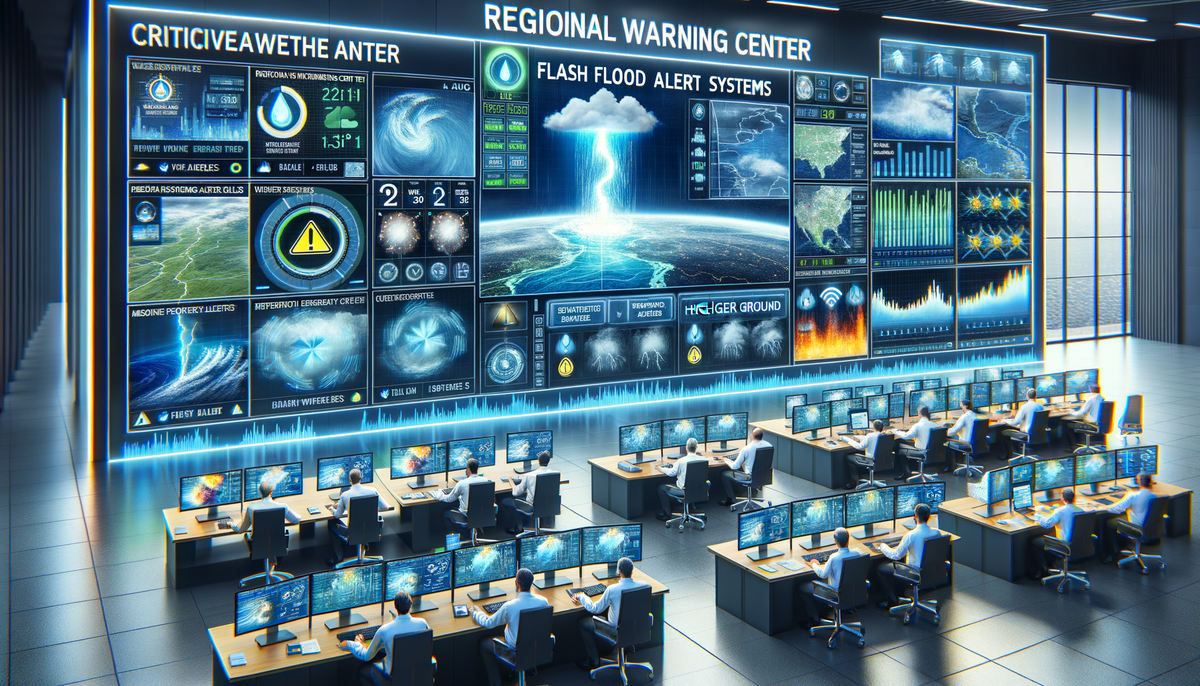Flash Flood Warning: Immediate Action Required for Safety
Explore the critical safety measures and alert systems associated with flash flood warnings. Understand how these emergency alerts work and how to respond effectively.

Flash Flood Warning: Immediate Action Required for Safety
A flash flood warning is one of the most urgent alerts issued by the National Weather Service (NWS), signifying that a flash flood is imminent or already occurring in a specific area. Knowing how to respond to such alerts can be crucial in preventing loss of life and property damage.
Definition and Characteristics
The sudden, violent nature of a flash flood is what makes it particularly hazardous. Unlike regular floods, flash floods can develop rapidly, sometimes within minutes to hours following heavy rainfall. These events can occur because of multiple factors such as dam breaks, levee failures, or the sudden release of water held by ice jams. One critical aspect is that flash floods can occur in areas not directly receiving rain, making them even more unpredictable and dangerous.
The NWS categorizes these alerts under the SAME code "FFW". Recently, the NWS has upgraded these warnings to an Impact-Based format to ensure better public response. This adjustment highlights the necessity for immediate action and a more informed public.
Flood Alert System Hierarchy
Understanding where a flash flood warning fits into the hierarchy of weather alerts is essential for public awareness and safety. There are several levels of alerts, each indicating different levels of risk and urgency:
- Flood Advisory: Issued when a weather event might cause inconvenience without being life-threatening.
- Flood Watch: Signals favorable conditions for flooding, suggesting preparedness, but does not indicate certainty.
- Flood Warning: Indicates that flooding is imminent or already occurring.
- Flash Flood Warning: Expects sudden, violent flooding, demanding immediate action.
- Flash Flood Emergency: Used in extremely severe situations, similar to a tornado emergency, and often issued in densely populated areas.
When and Why Warnings Are Issued
The issuance of flash flood warnings by the NWS occurs when:
- Flash flooding is currently happening.
- Flash flooding is imminent or expected to begin shortly.
- Flash flooding is highly probable due to existing conditions.
Such warnings often coincide with strong weather radar echoes indicating intense rainfall over areas susceptible to flash flooding.
Recommended Safety Actions
Immediate action is essential when a flash flood warning is issued. Here are some key safety measures:
- Move to higher ground immediately if you are in a flood-prone locale.
- Stay vigilant for signs of heavy rainfall, and respond to any such indications promptly.
- Refrain from attempting to cross flowing water; this can be deadly in flooding situations.
- If you notice rapidly rising water, move to safety without delay.
Differentiating between a flash flood watch and warning is critical. While a watch suggests being prepared for possible flooding, a warning demands immediate protective action.
Expertise in Flash Flood Warnings
As part of our services at Newsomix, we provide detailed analyses and updates on trends in severe weather alerts like flash flood warnings. Our goal is to equip businesses and professionals with actionable insights to enhance their preparedness and response strategies. Through continuous monitoring and expert commentary, we strive to elevate public understanding and readiness.
Call to Action
For those interested in exploring the depths of flash flood warnings and developing robust response plans, consider reaching out to us at Newsomix. We offer tailored consultancy services designed to help you navigate the complexities of severe weather alerts efficiently. Stay informed, stay safe, and ensure that your organization is ready to face any flash flood scenario confidently.




